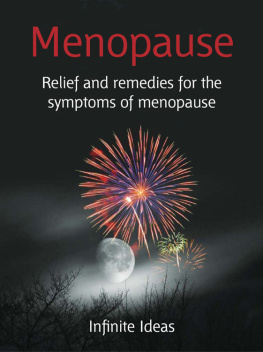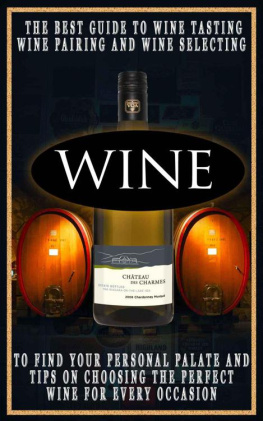Secrets of wine
Insider secrets from top wine experts
Infinite Ideas with Giles Kime

7. Glass act
In order to fully appreciate the smell of a wine it is essential that you have the right glass. But dont allow yourself to be confused or conned by anyone who tries to sell you a different glass for every conceivable type of wine.
The perfect wine glass is much simpler and cheaper than you might be led to believe.
The more wines you try, the more youll discover that their tastes and smells can be heavily influenced by factors such as their temperature, the food that youre eating with them and whether you have just brushed your teeth or eaten some chilli.
Another factor is the shape of the glass. In the world of wine buffery there are two schools of thought on the subject: a relaxed approach and an obsessive approach (sitting on the fence is not an option). One of the rules of wine buffery is that it is always important to have an opinion on everything. But such opinions ought to be yours rather than anyone elses.
TWO KINDS OF GLASSES
In order to get to grips with the theory, you need to do some homework for which you will need two glasses.
The first glass should be the ubiquitous Paris goblet, the glass that has a modestly sized spherical bowl on a stem and is beloved by pubs and seaside boarding houses because it is both cheap and capable of withstanding almost anything that a dishwasher can chuck at it.
The second glass will require more investment. It must be larger and tulip-shaped, i.e. the circumference of the rim should be smaller than that of the bowl, and the glass must be thinner than the type used to make an everyday drinking glass. The test of good-quality glass is that it resonates when you flick it with your finger nail.
TASTE TEST
Pour about 125 ml of an aromatic white wine such as a good-quality New Zealand Sauvignon Blanc into each glass. In the smaller glass you will notice that the surface of the wine is much closer to the rim than in the larger glass, where it occupies a relatively small proportion of the bowl. This fact will become more strongly evident when you come to smell the wine: your nose will be much closer to the wine in the smaller glass than in the larger glass.
QUESTIONS TO ASK YOURSELF
1. A question of smell. How does the smell of the wine in the smaller glass compare with the smell of the wine in the larger glass?
2. A question of taste. Is there any difference between the flavour of the wine in the small glass and flavour of the wine in the large glass?
EXAMINING YOUR FINDINGS
There is no real science to choosing the right glass. The most important factor is simply that ones appreciation of the smell and flavour of a wine is influenced by the shape of the glass and the thickness of its rim. A large, tulip-shaped glass captures the aroma and if not overfilled will provide sufficient space for the aroma of the wine to express itself. Combined with a thin rim which is less intrusive in the tasting experience than a thick rim it offers the ideal vessel in which to taste wine. Another obvious advantage of drinking wine from a tulip-shaped glass is that it allows you to swill the wine around in the glass without it spilling over the edges.
LEARNING TO TELL FACT FROM FICTION
There are those who believe that in order to maximise your enjoyment of a wine you have to drink from a glass that has been tailored to bring out that wines best features. The only way to test the theory is to invest the considerable sum required to equip yourself with a huge array of specialist glasses and then let your nose and palate judge for themselves. Alternatively, you could save yourself a fortune and satisfy yourself with two or three glass shapes.
How did it go?
Q Is there a reason that Sherry is traditionally served in small glasses?
A No reason at all except possible post-war austerity. Theres no reason why Sherry shouldnt be served in an ordinary wine glass.
Q Are there any wines that are suited to Paris goblets?
A No.
Q Why is it that bad wine sometimes tastes better in tumblers than in tulip-shaped glasses?
A Bad wine rarely smells great, so by tasting it in an open glass rather than an enclosed one you are allowing the unattractive aromas to disperse.
Heres an idea for you
Try the Taste Test with other types of wine. How do the flavour and aroma of a good Fino Sherry compare when they are tasted in an old-fashioned thimble-sized Sherry glass, a tulip-shaped copita and a large wine glass? How does red Bordeaux vary when it is tasted in a tumbler and in a good-quality wine glass. Only extensive tasting will help you understand the complex relationship between a wine and the glass you drink it in.
Try another idea
Choosing the right wine glass will help you to maximise your enjoyment of a wines aromas, a subject explored in IDEA 6, Scents and sensibilities.
Defining idea
Burgundy, particularly red Burgundy, has come to be served in glass balloons, so large that they resemble goldfish bowls. The idea, apart from lusty exhibitionism, is that a good Burgundy can offer such a rich panoply of aromas that they should be given every chance to escape the wine and titillate the taster. Most wine connoisseurs use the shape on a reduced scale.
The Oxford Companion to Wine
8. Understanding Chardonnay
The Chardonnay grape produces far more than just one flavour. Depending on where it is grown and how it is handled, it will produce a vast array of styles some dull, some delicious.
Chardonnay is now so ubiquitous that for some people it has become something of a joke. Yet the grapes come in such great diversity that it is hard to generalise about them.
So when people say that they have Chardonnay fatigue or that they are members of the ABC (anything but Chardonnay) movement, which particular kind of Chardonnay are they referring to? Chablis, Meursault or Macon? Southern French, northern Italian, or Sicilian? Or is it Australian Chardonnay that they are disillusioned with? And, if so, is it Ozzie Chardonnay from the Hunter, the Yarra or the Margaret River? Is it oaky Chardonnay or unoaked Chardonnay? The list of variations is almost infinite and, though there are some common characteristics, these are massively outnumbered by the shades of difference that occur in this extraordinarily adaptable grape variety. Depending on where it is grown, Chardonnay can demonstrate a huge variety of traits, from a steely, minerally austerity to an oaky, nutty richness.
Like any grape it can also make wines that are extremely bland and it is because of these that many better-quality examples have been given a bad name. But the reason for the grapes commercial success must also be that even when Chardonnay isnt well made it can still be much better than the basic examples of other white wines, such as Riesling or Sauvignon Blanc. It is perhaps this fact that has encouraged winemakers all over the world to make it their number one grape.
A POTTED HISTORY OF CHARDONNAY
In the beginning there was Chablis, the most popular of all white Burgundies, the wine that toffs drank with a roast on a Sunday (if they werent drinking red Bordeaux). Then the Australians wanted a piece of the action and during the 60s and 70s Chardonnay became increasingly popular, particularly in areas such as the Hunter Valley, which is now regarded as the spiritual home of Ozzie Chardonnay. The Californians planted it too and during the 80s and 90s it rapidly appeared in wine regions from Chile to South Africa. The rest is history. Chardonnay is now one of the most successful, widely recognised grape varieties, which winemakers love for its adaptability and drinkers for its approachability.
Next page
















